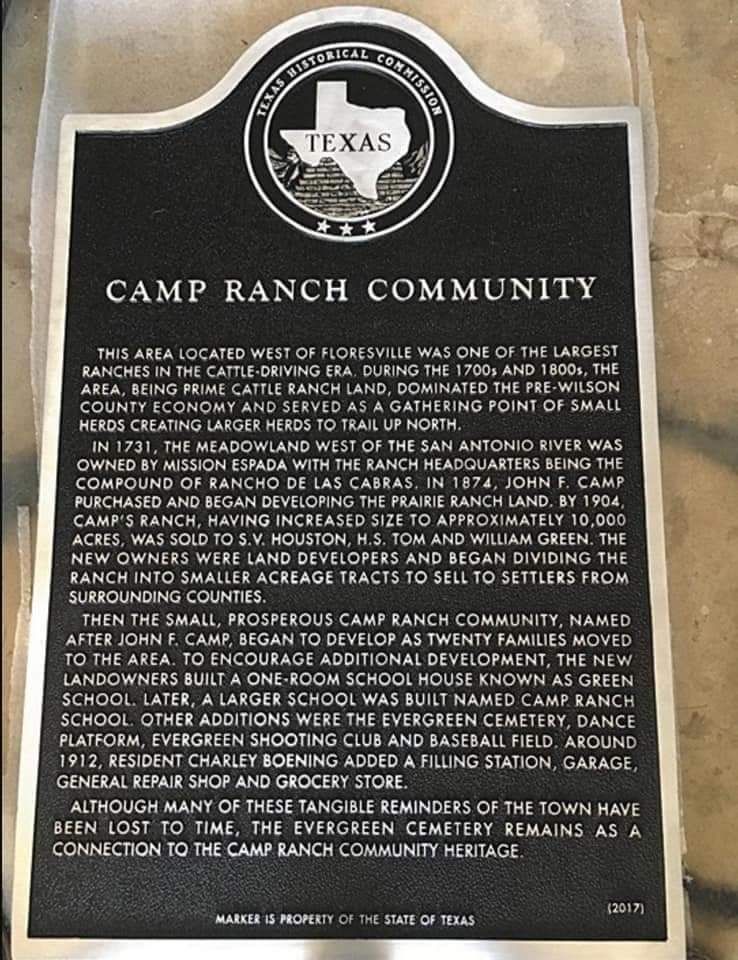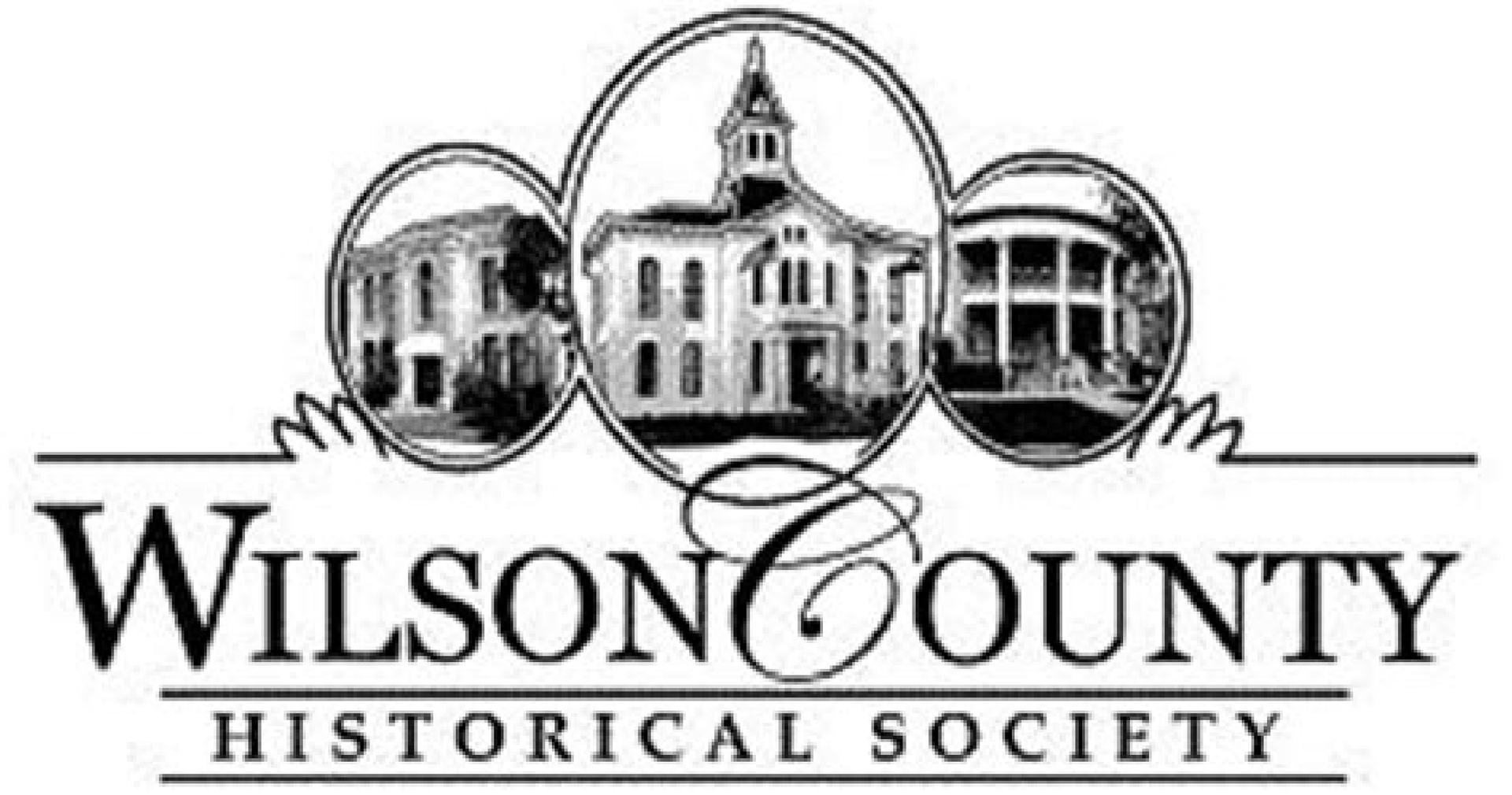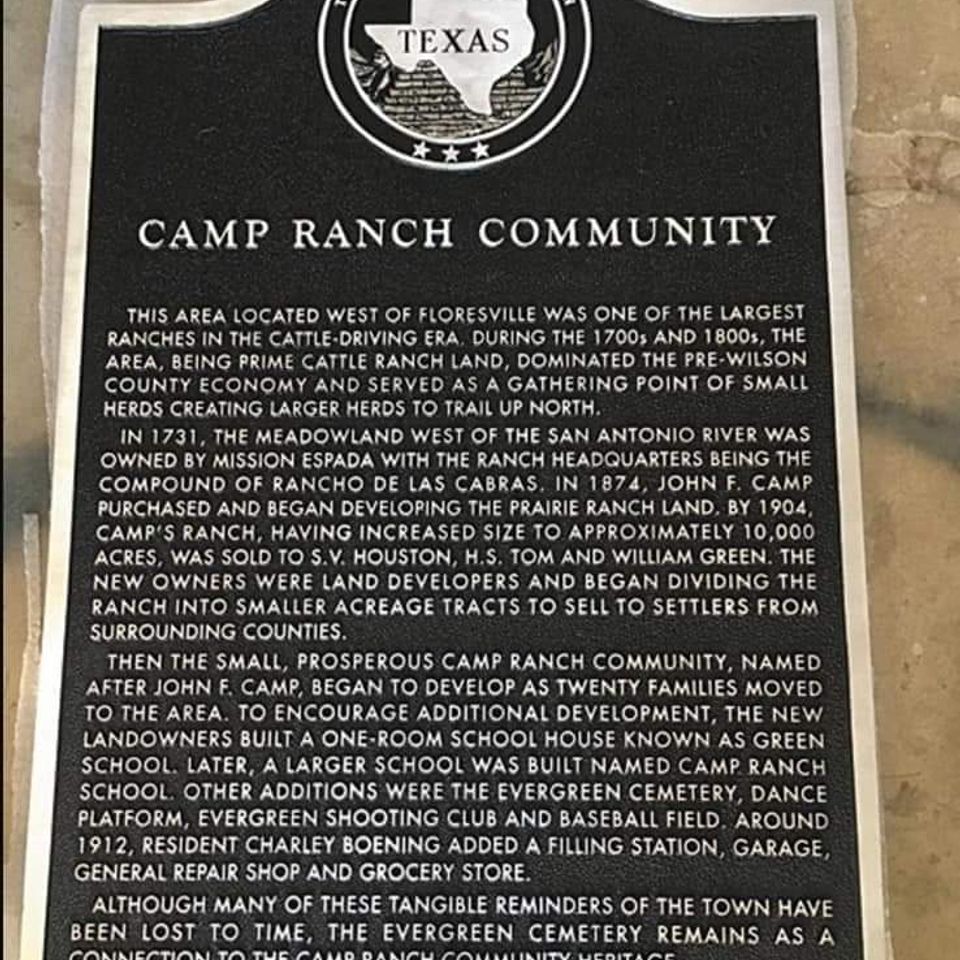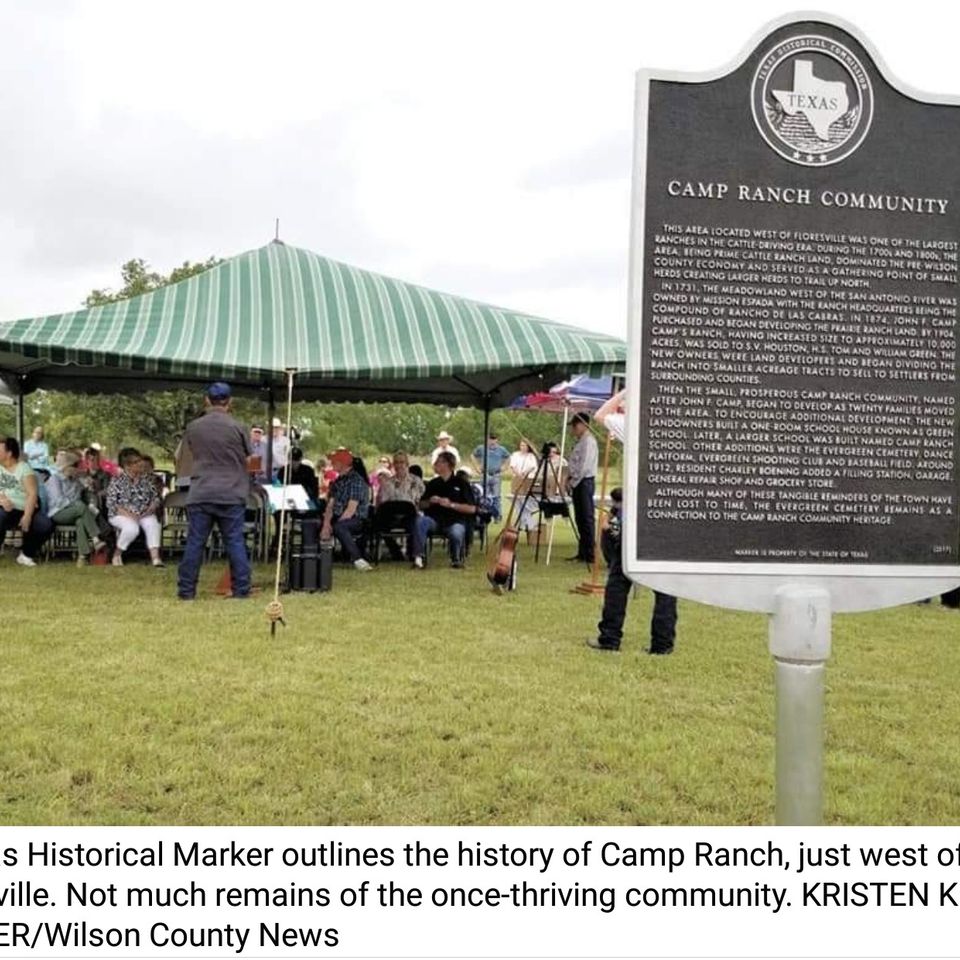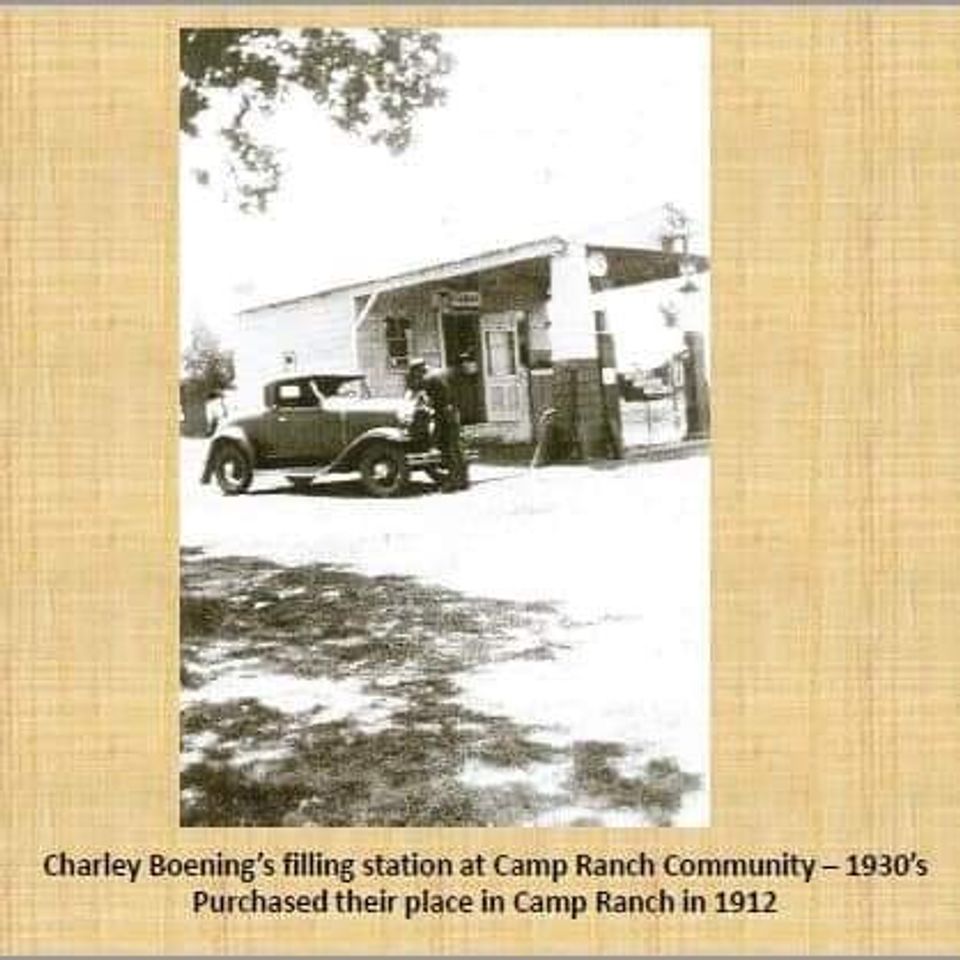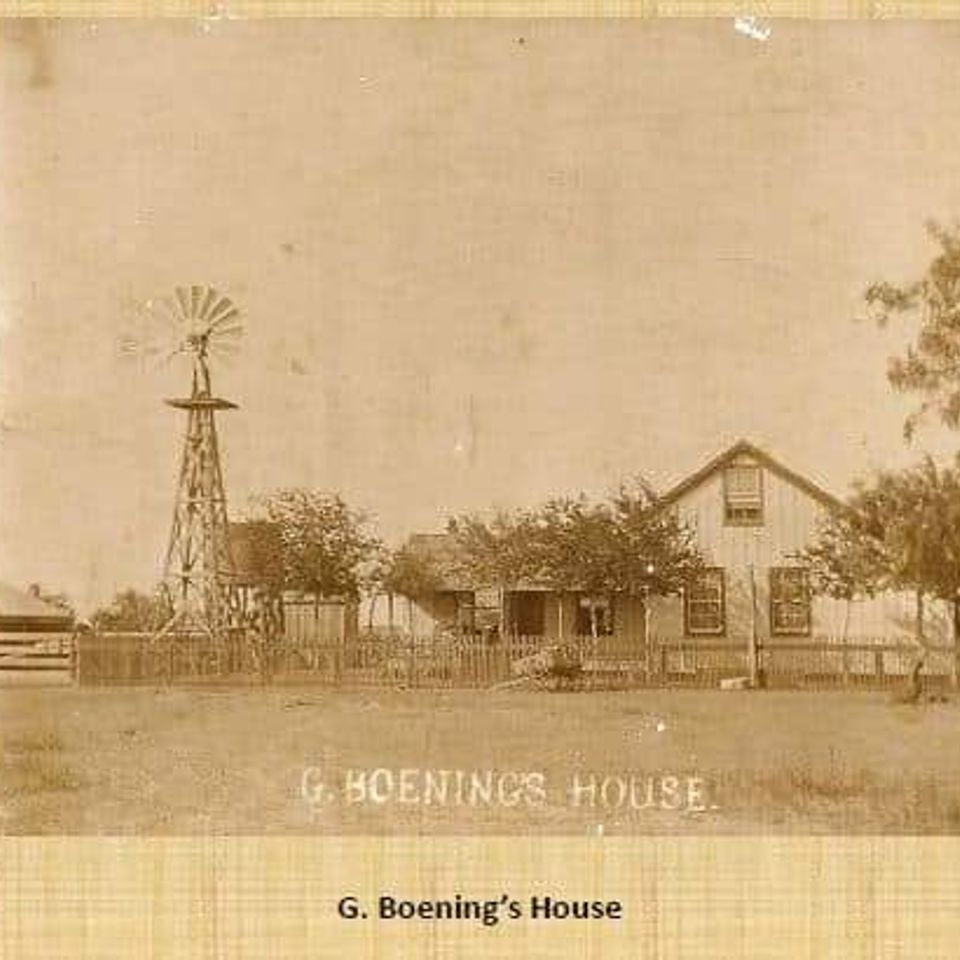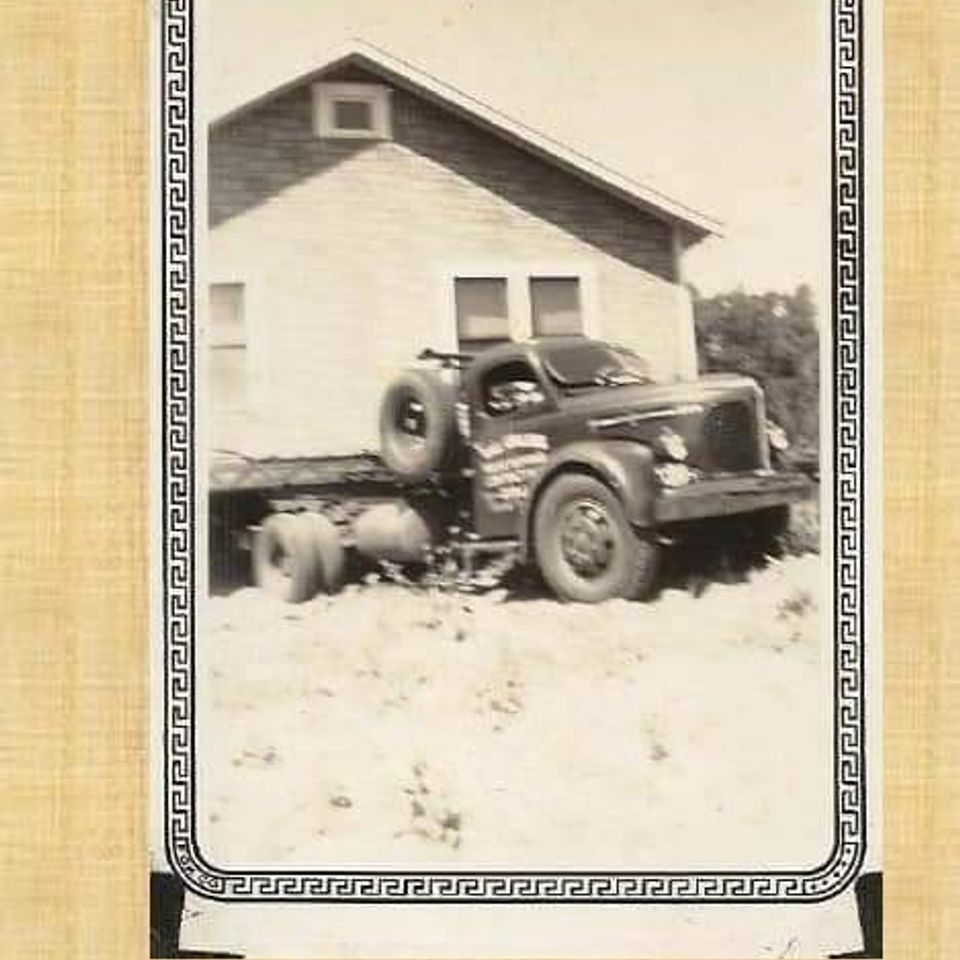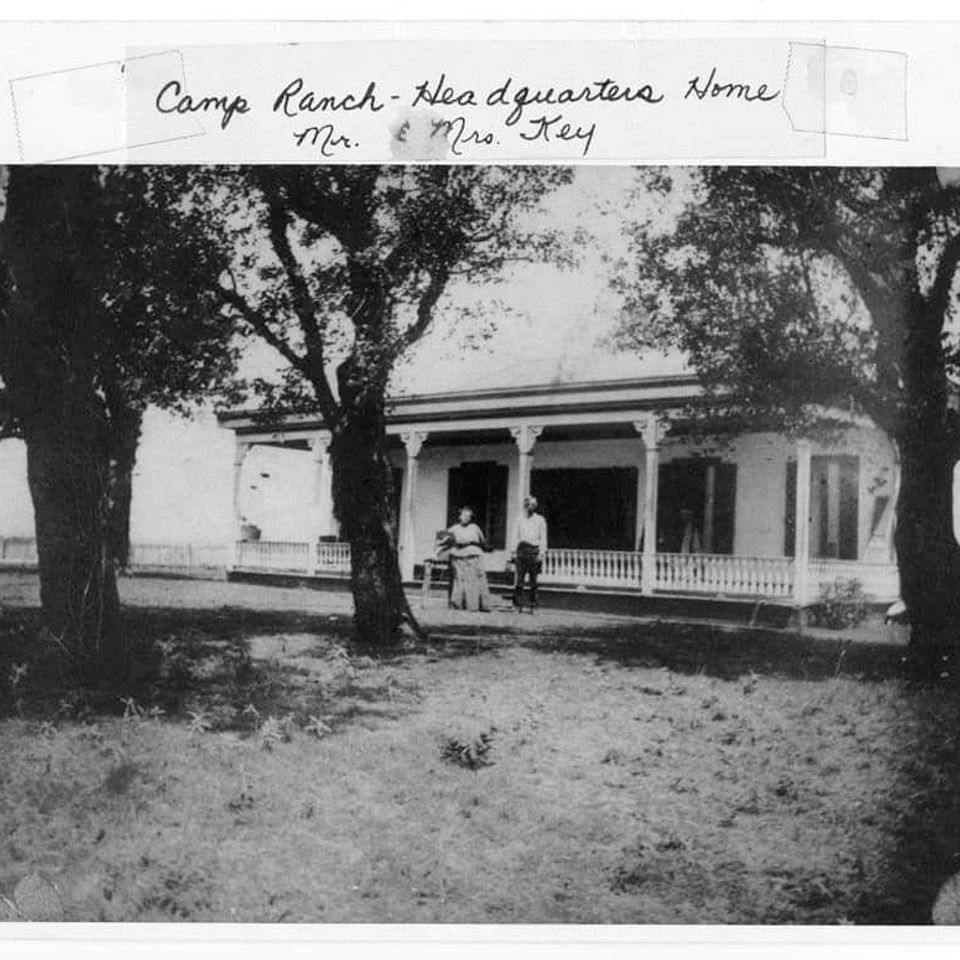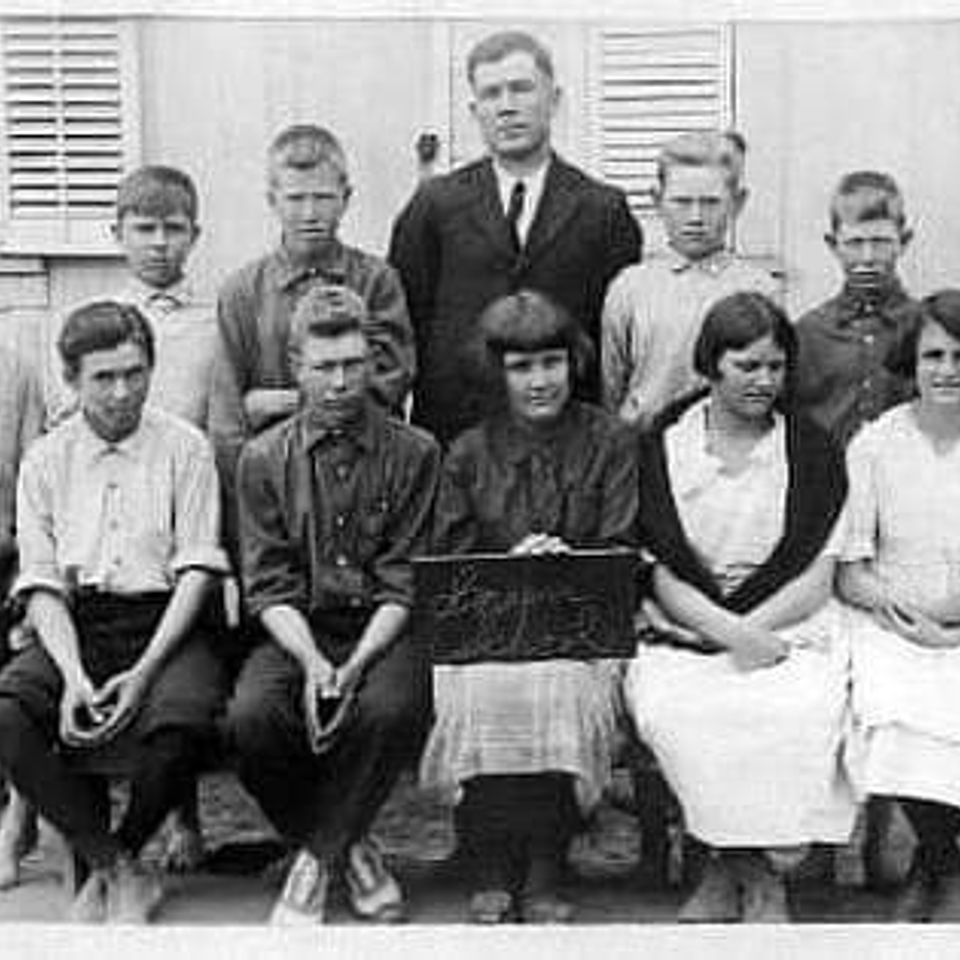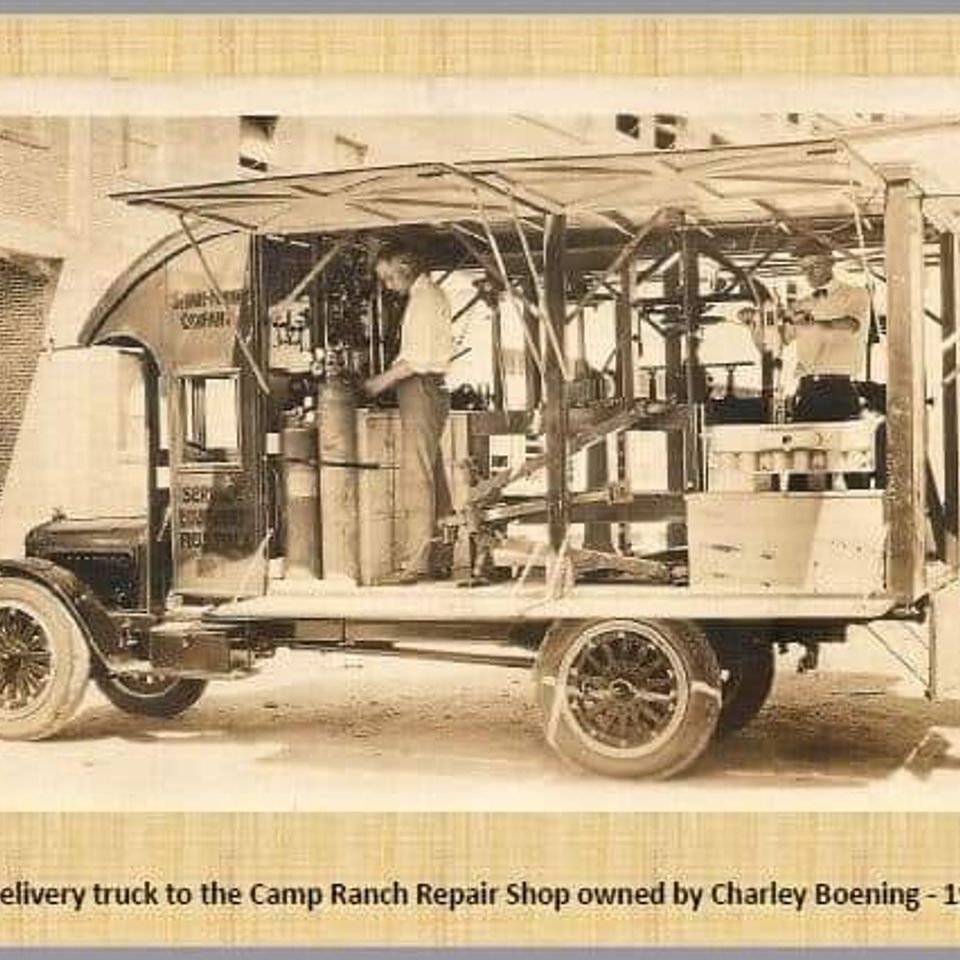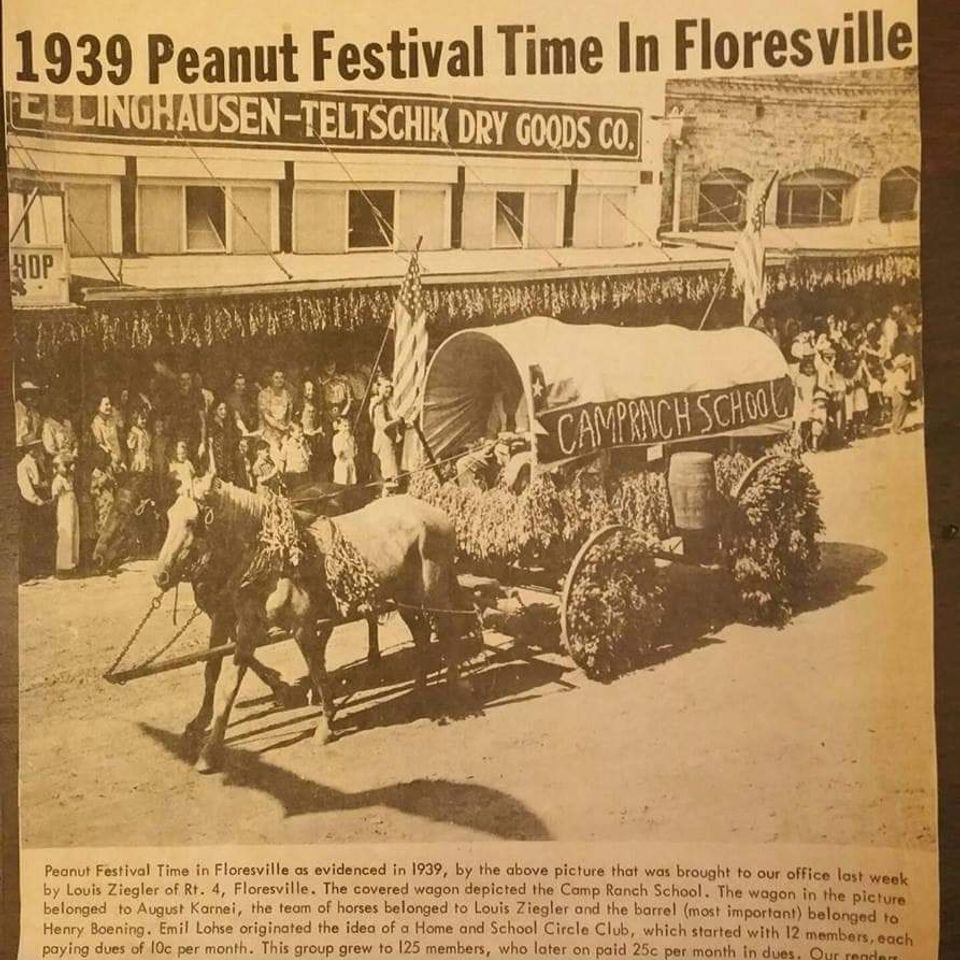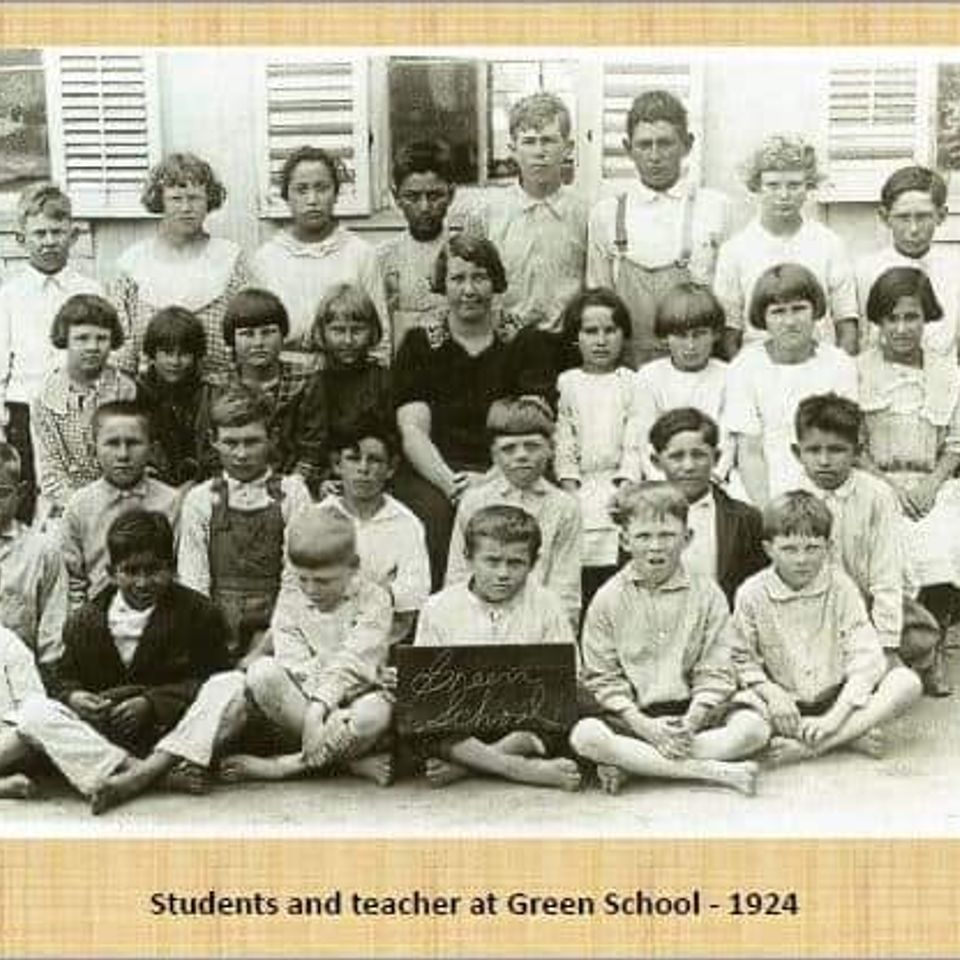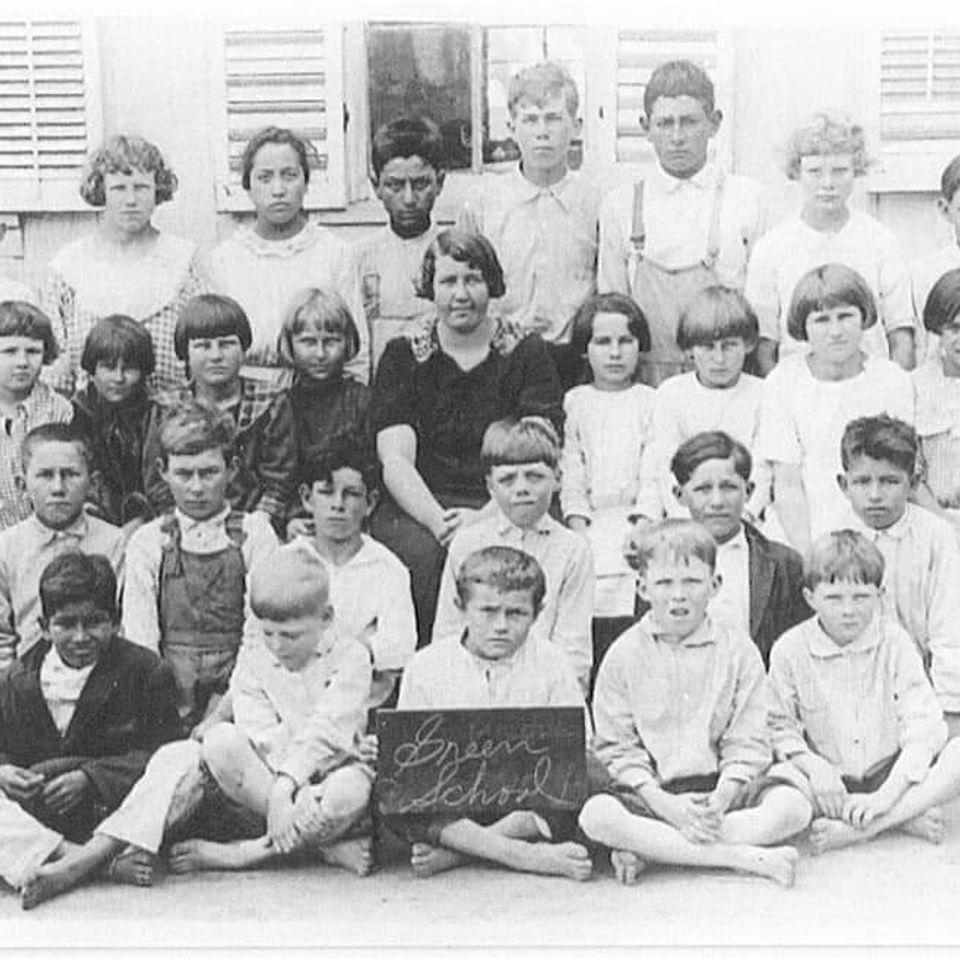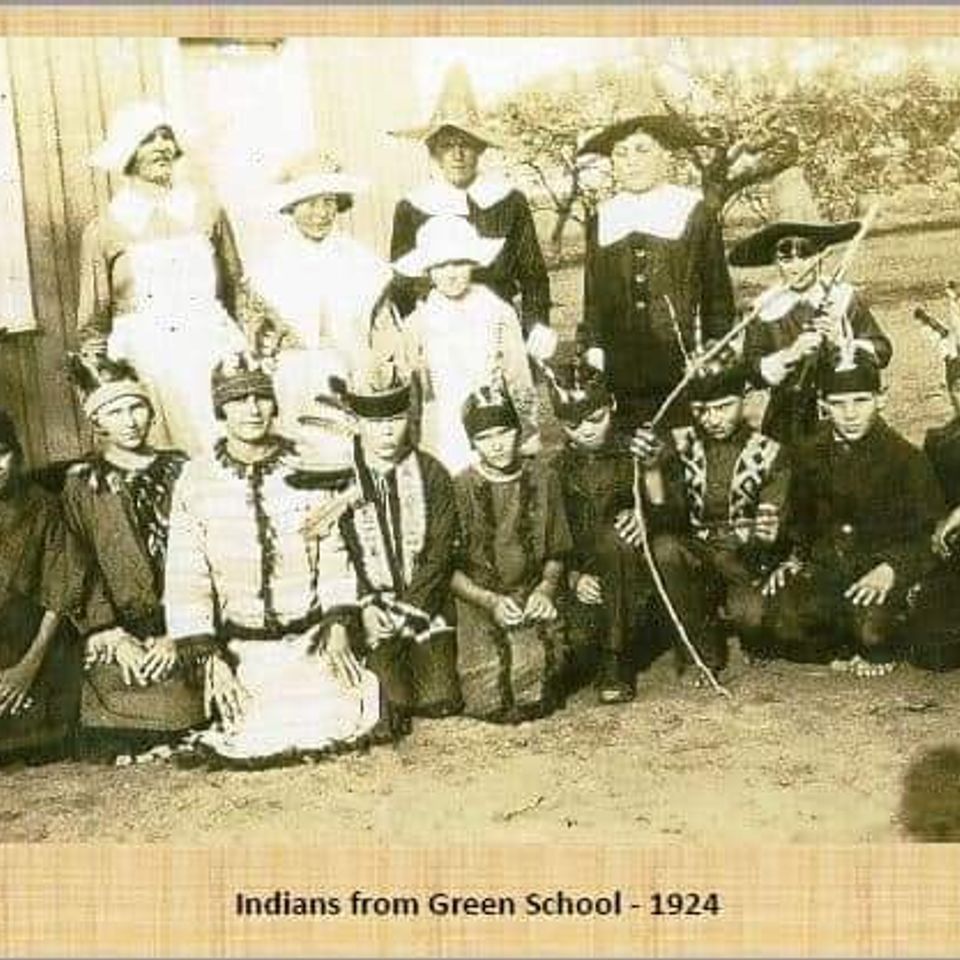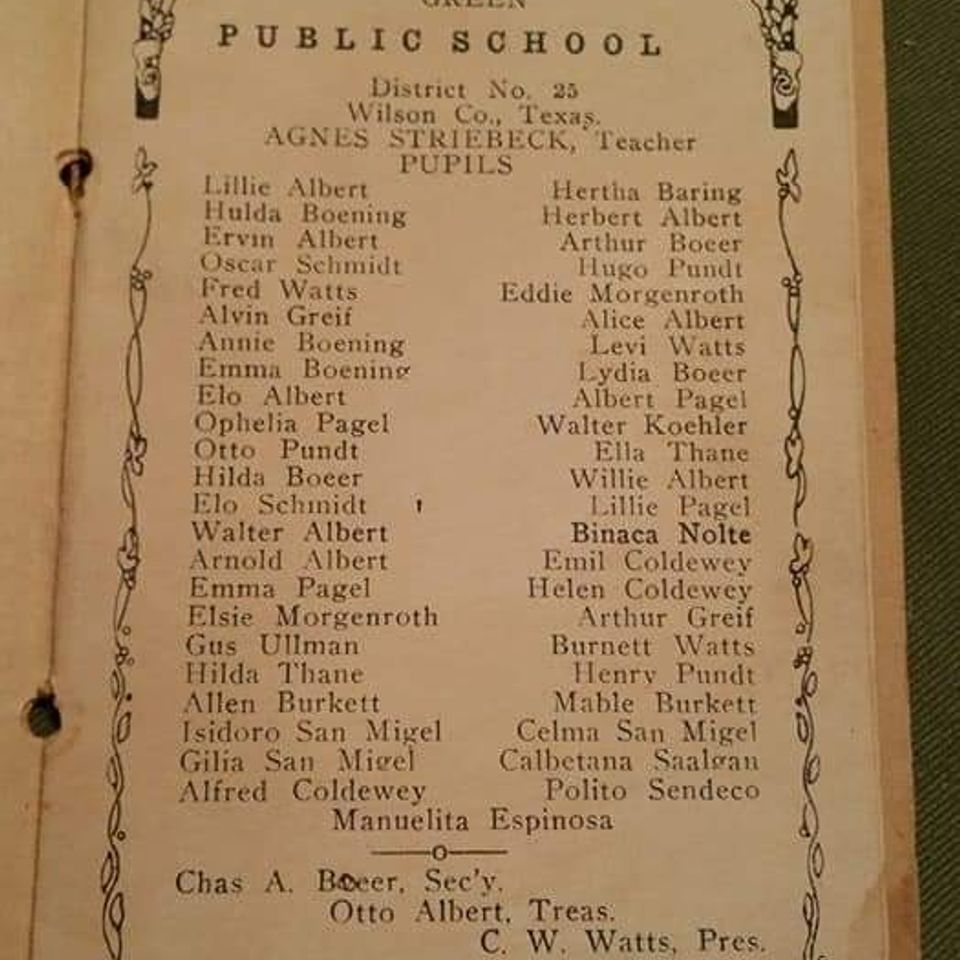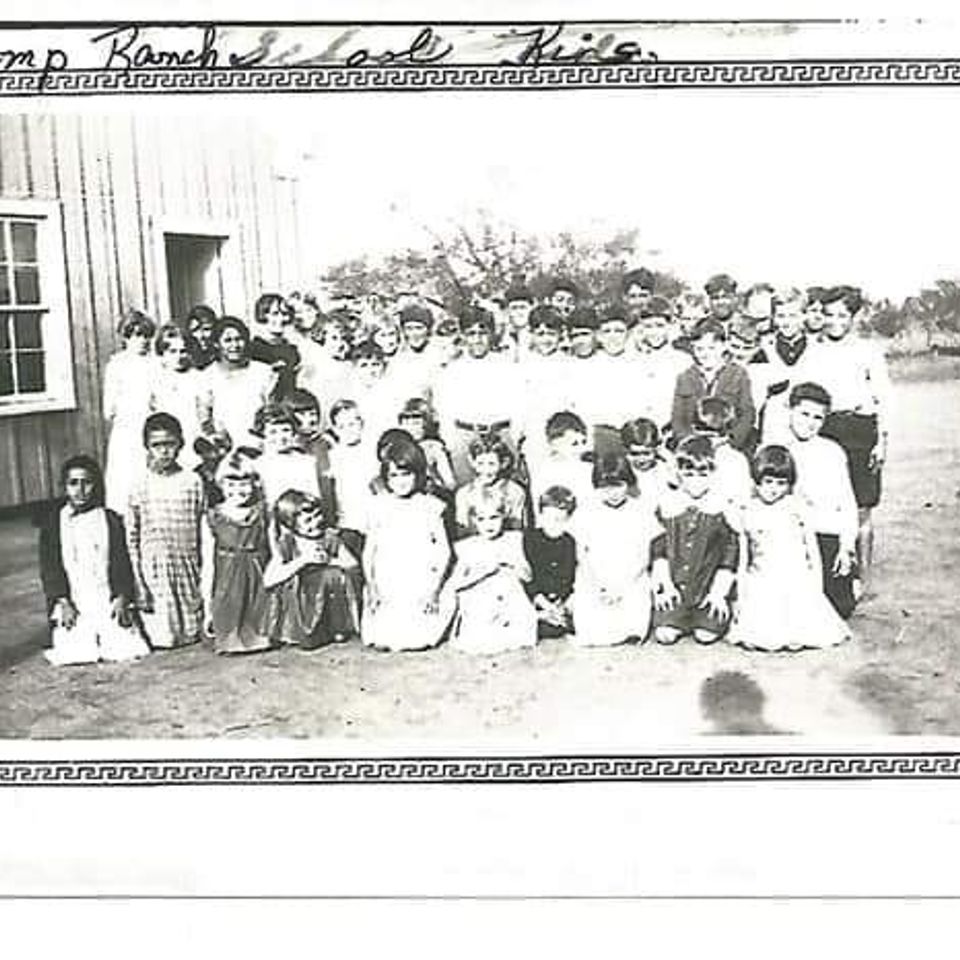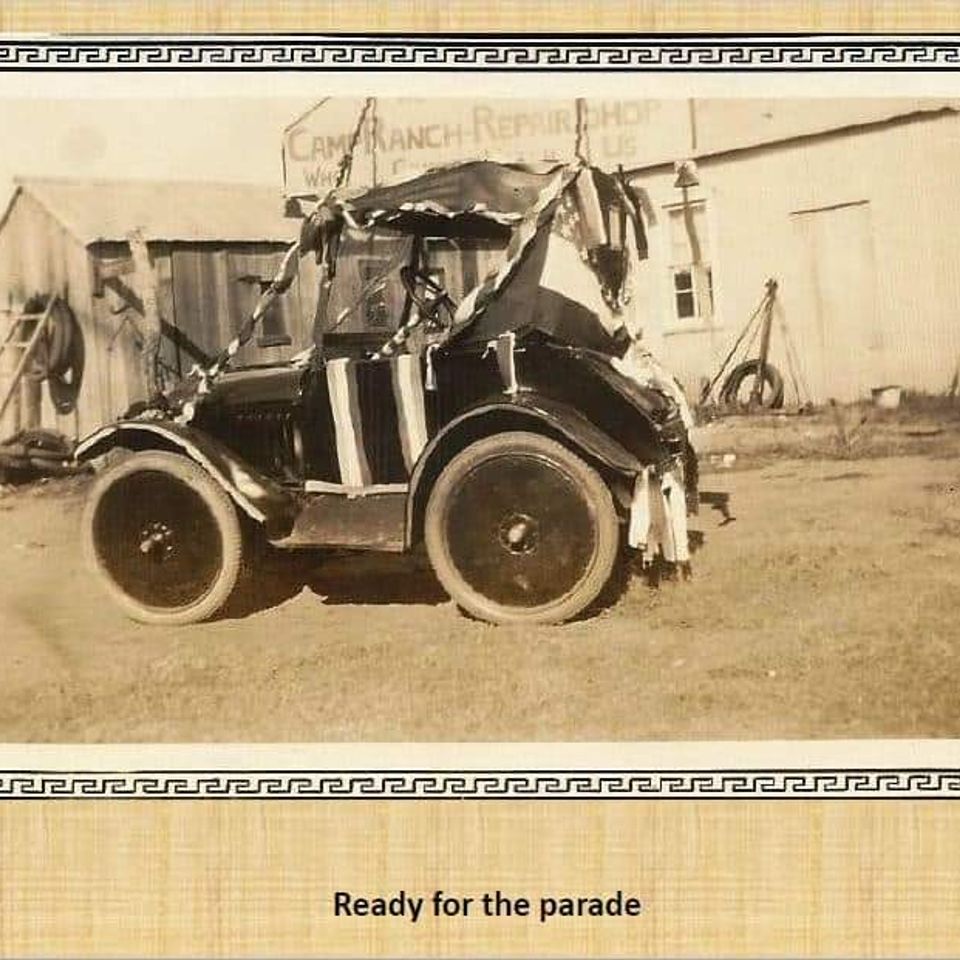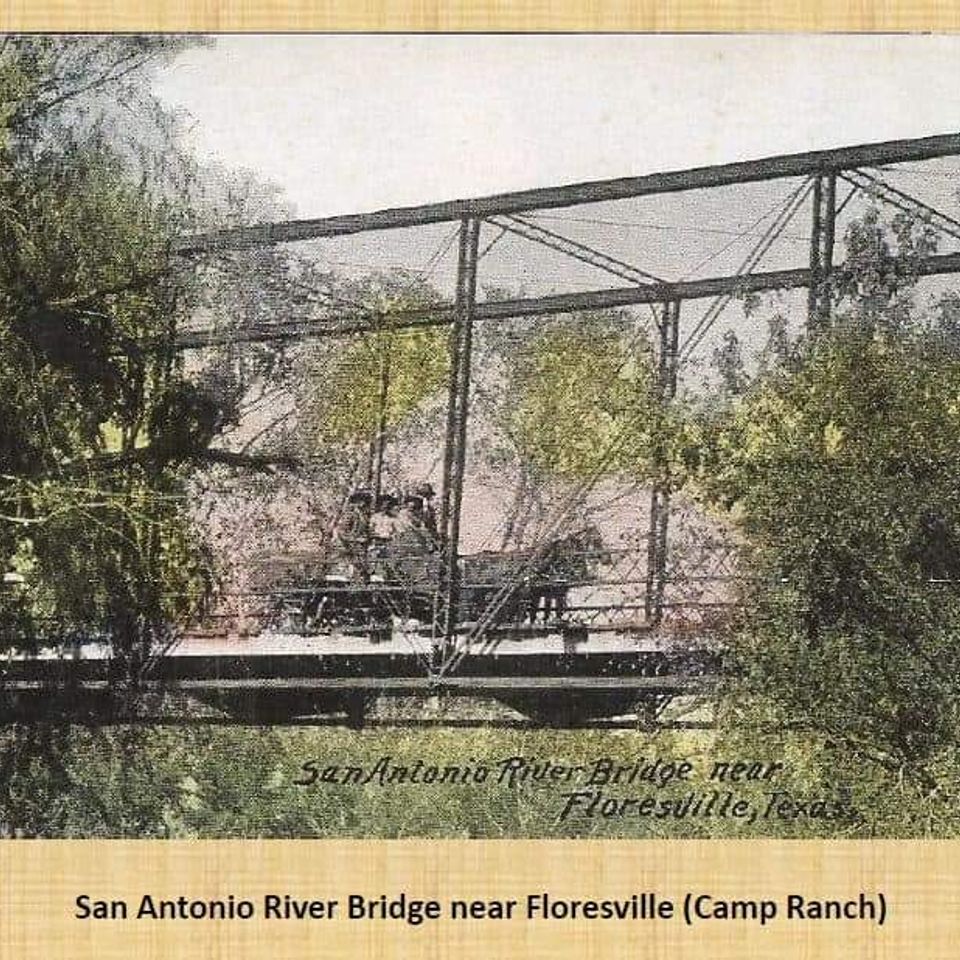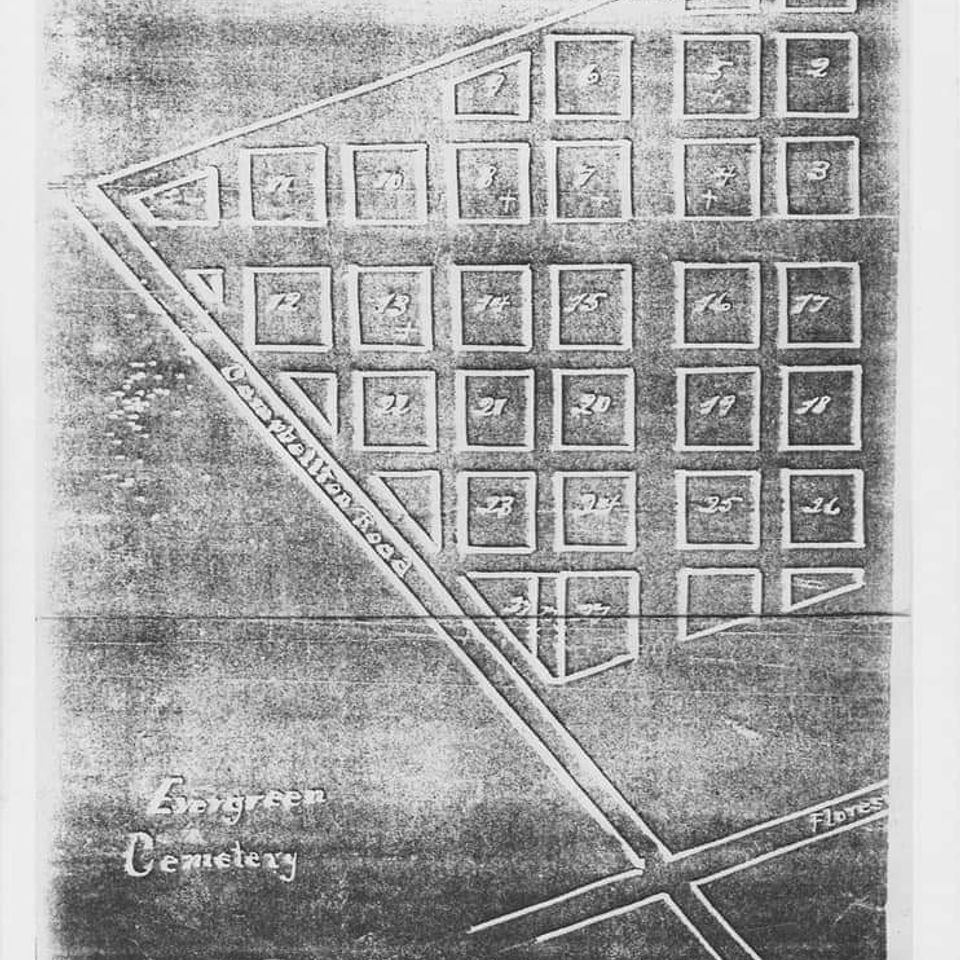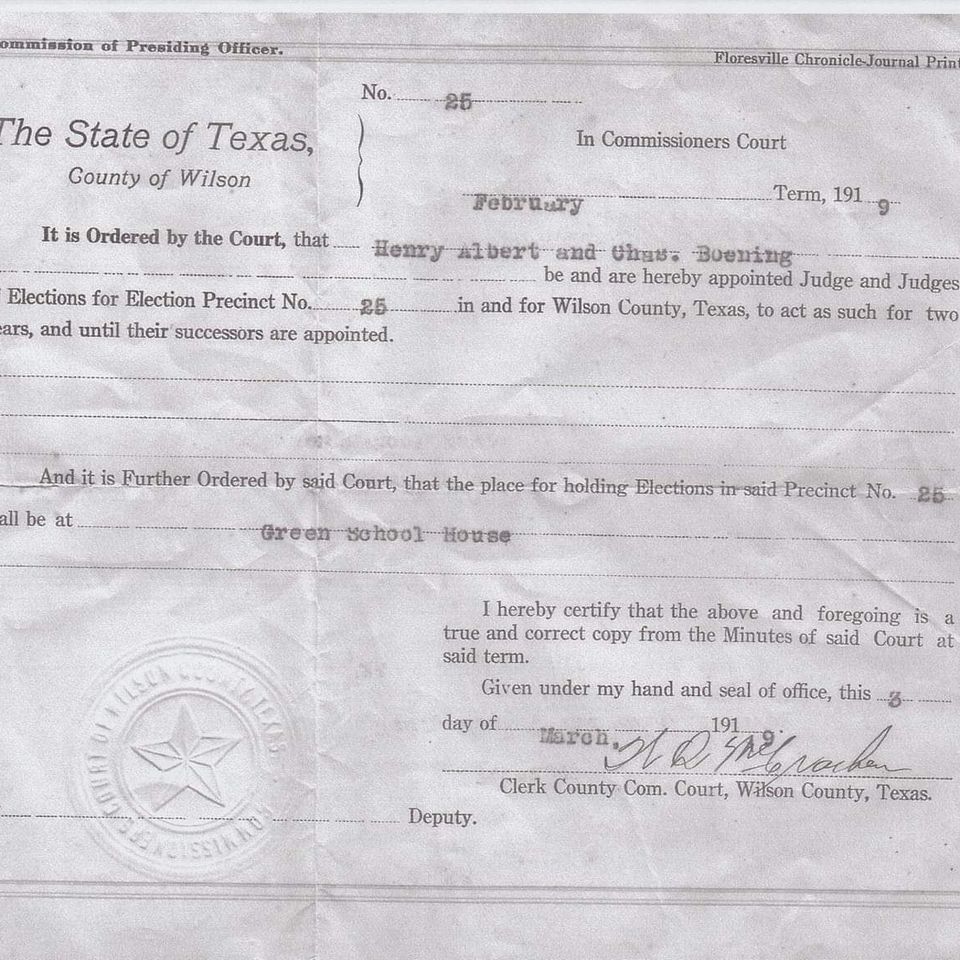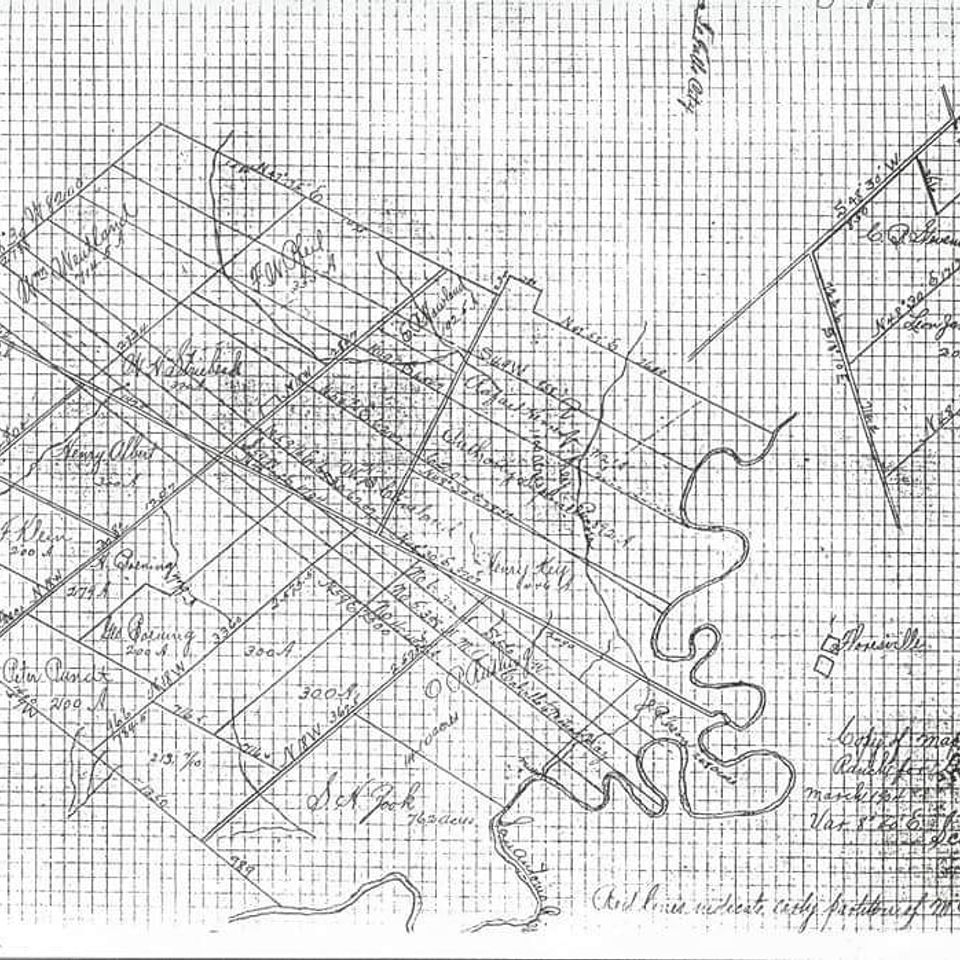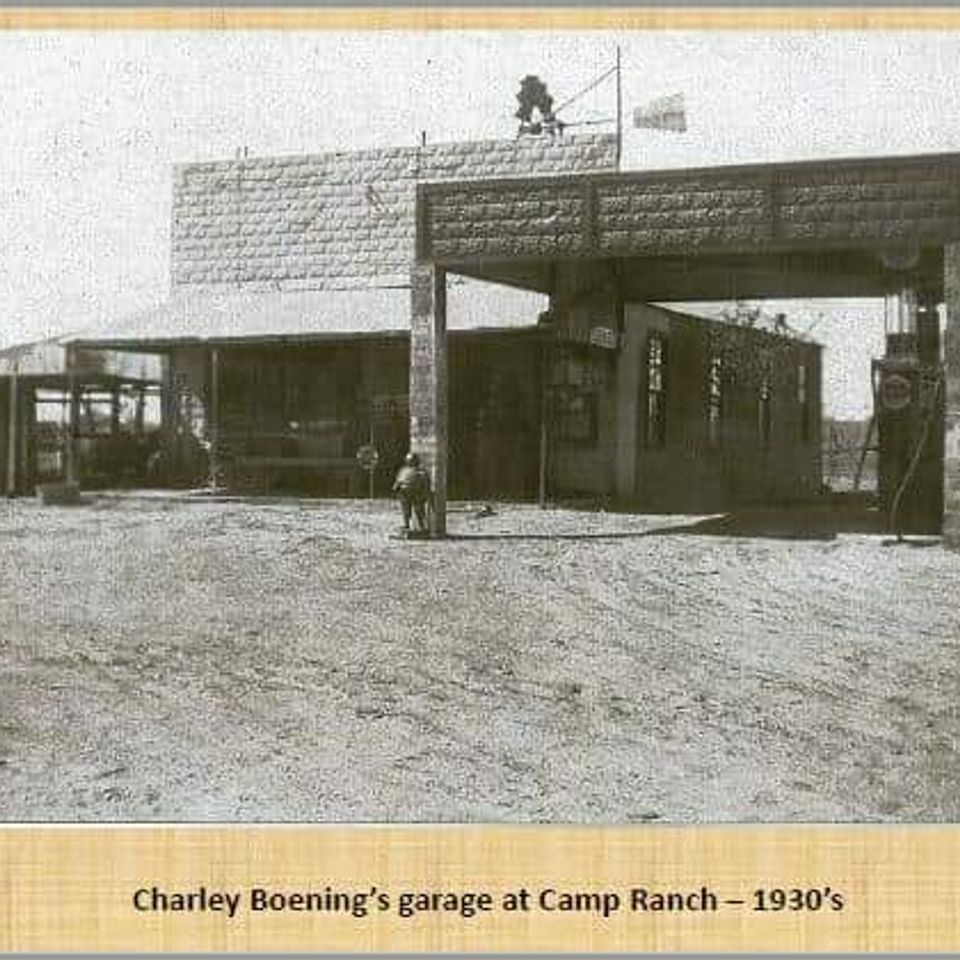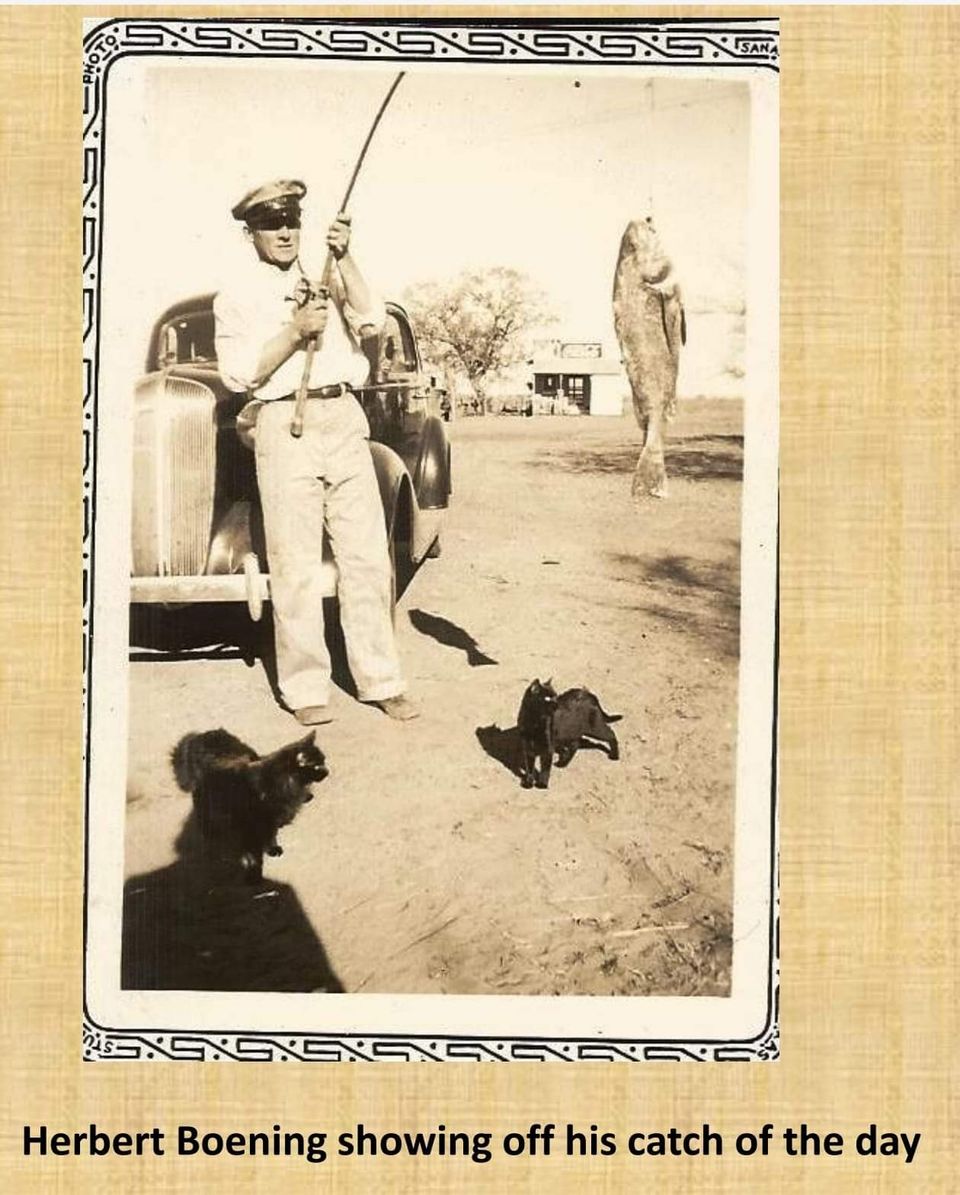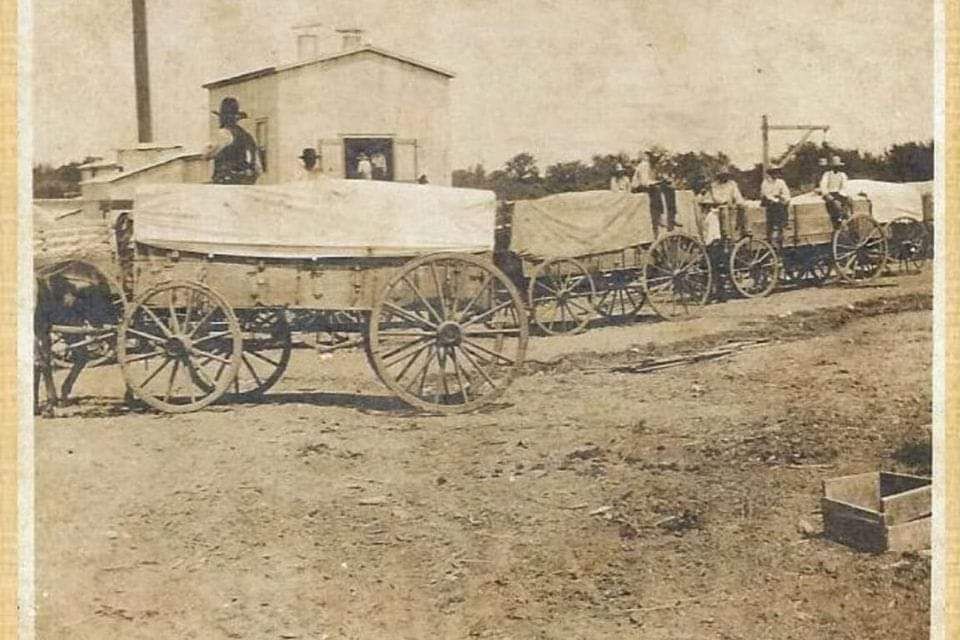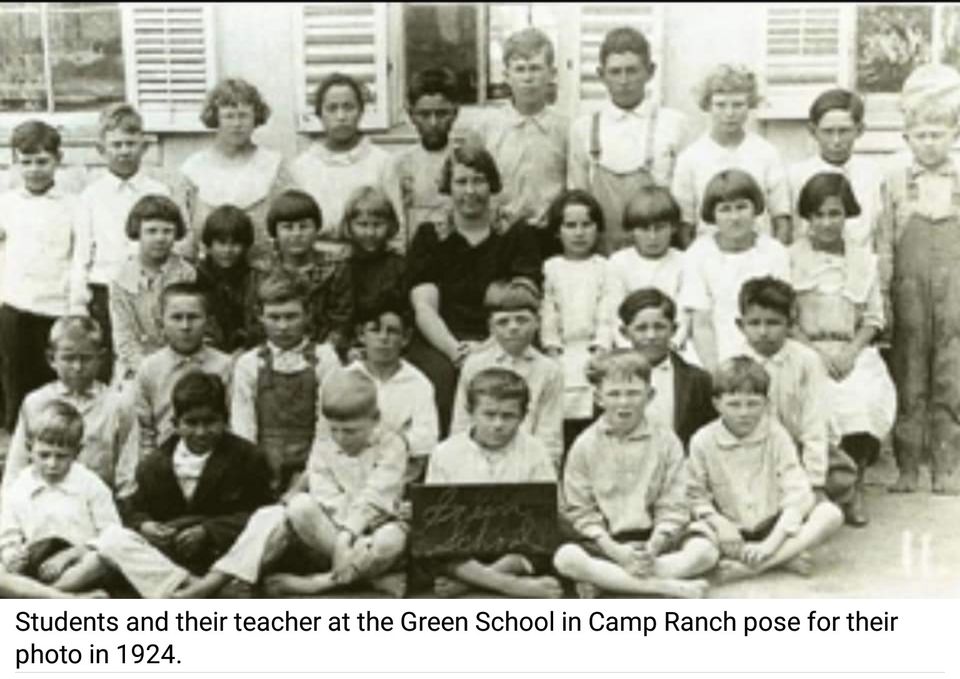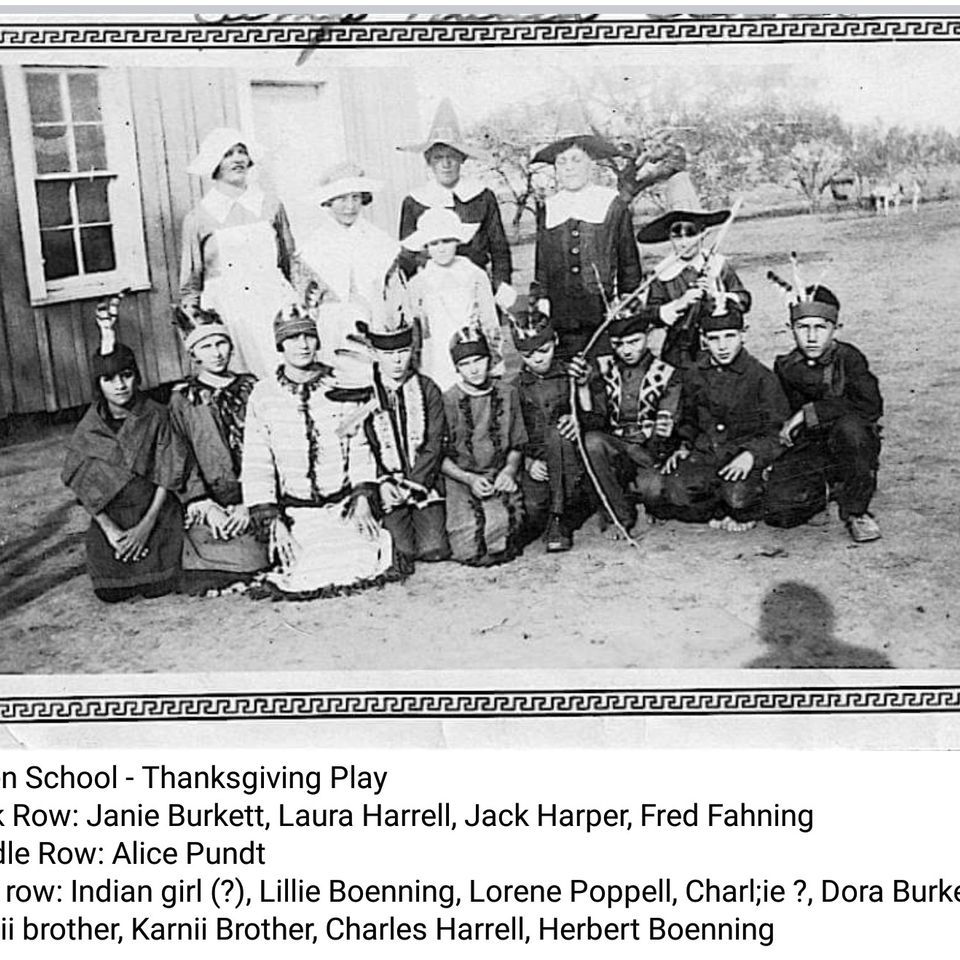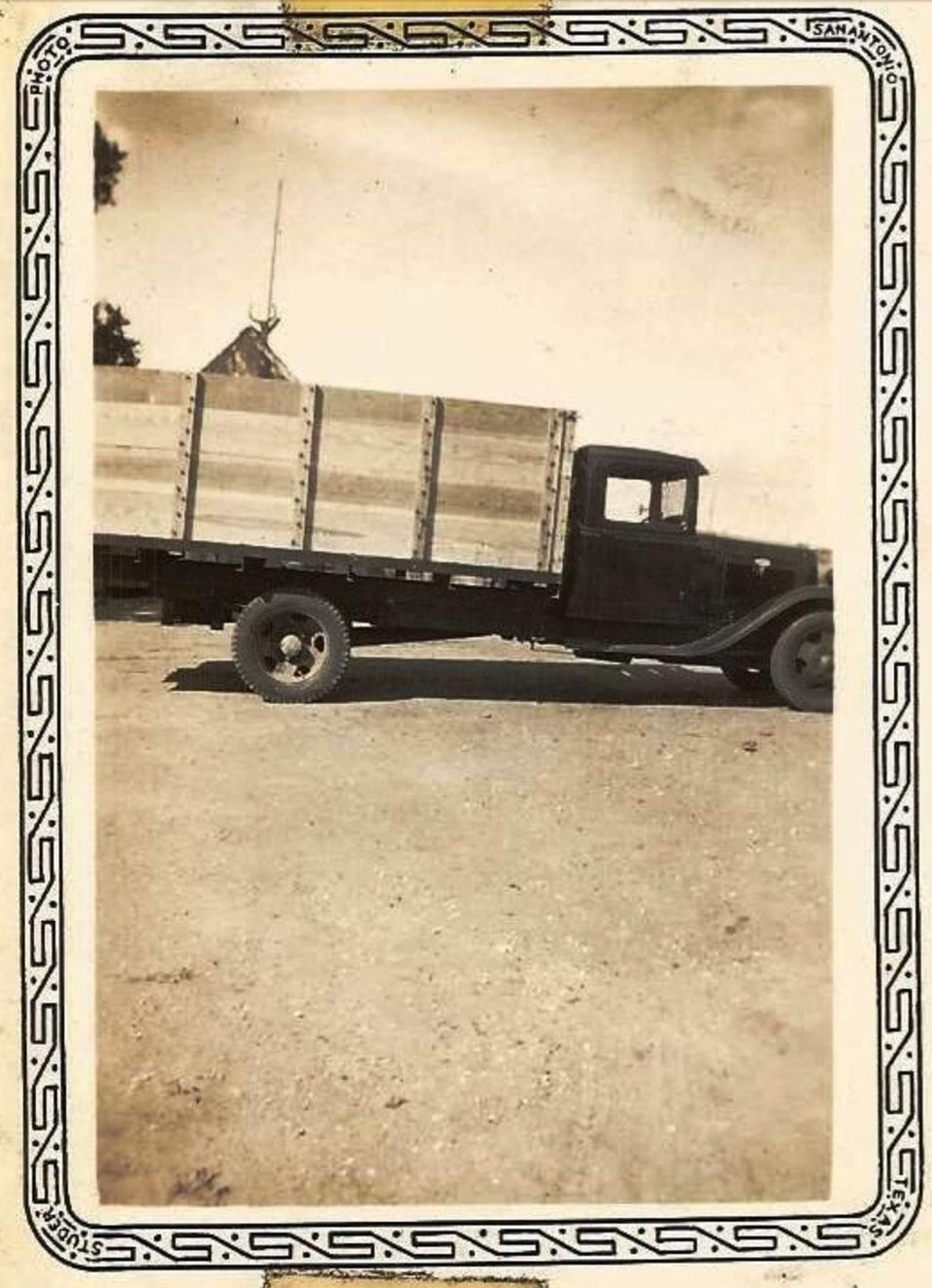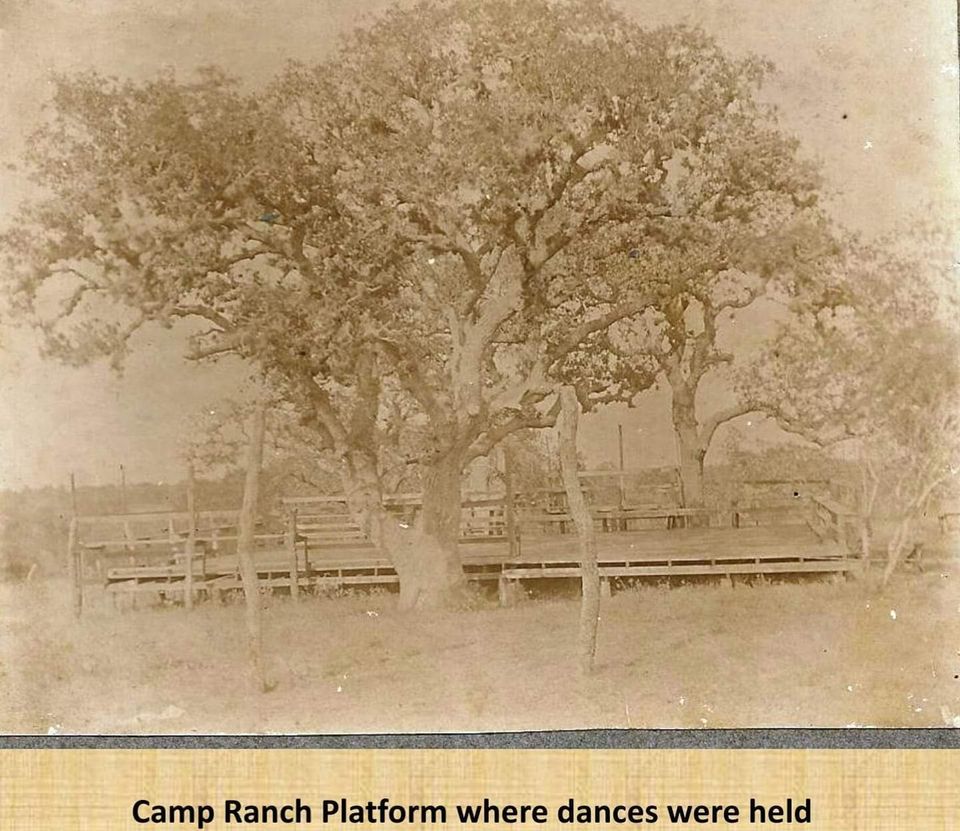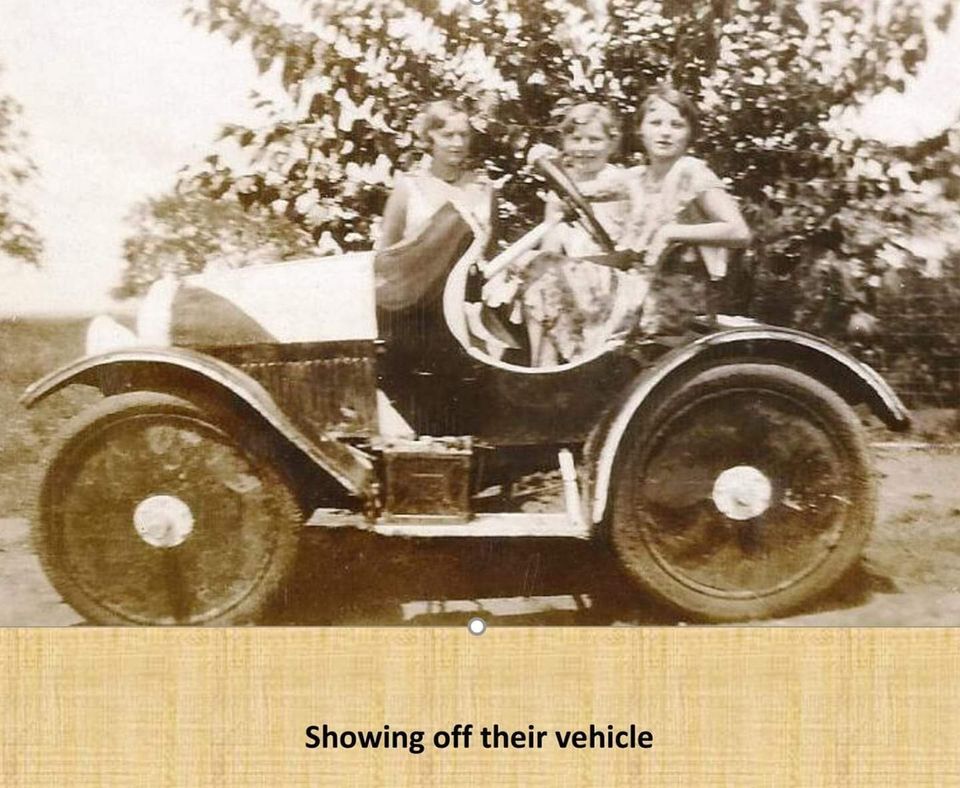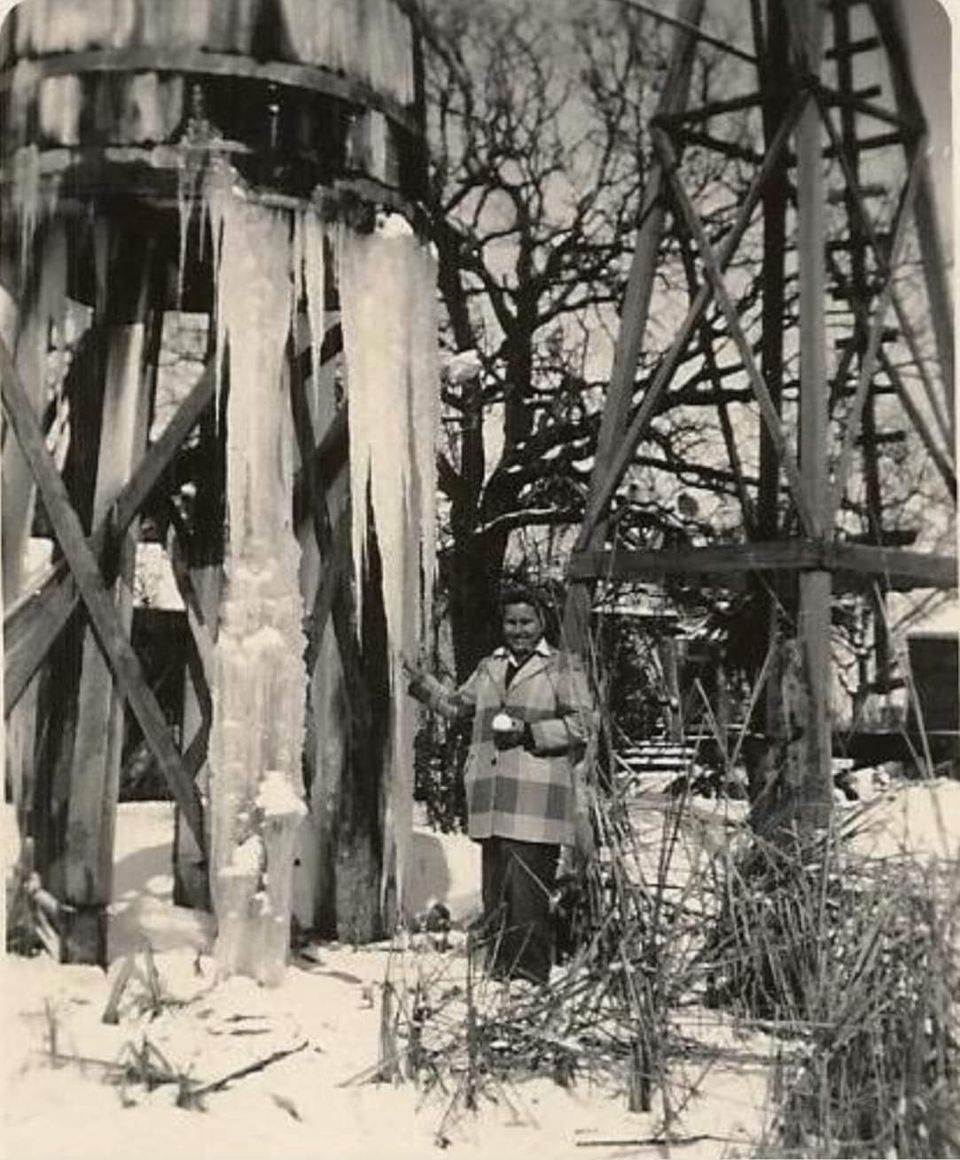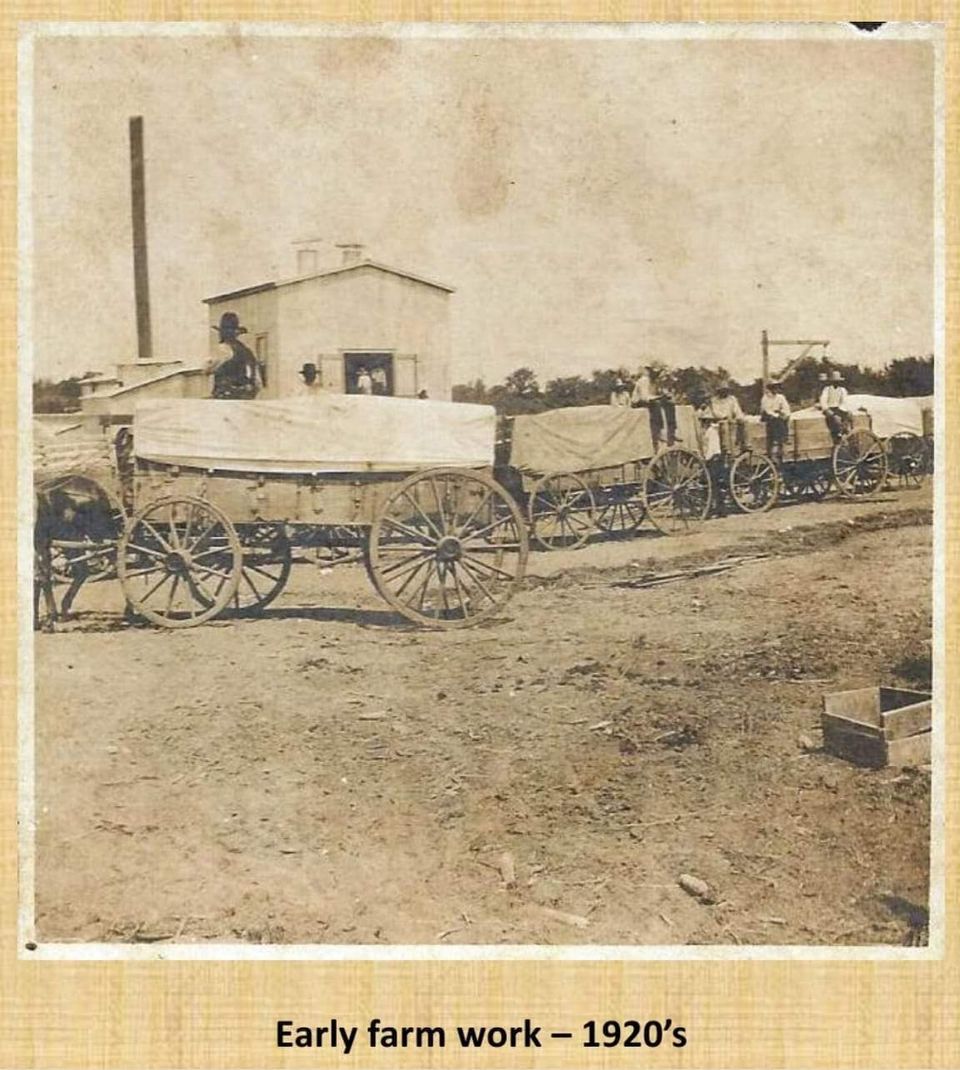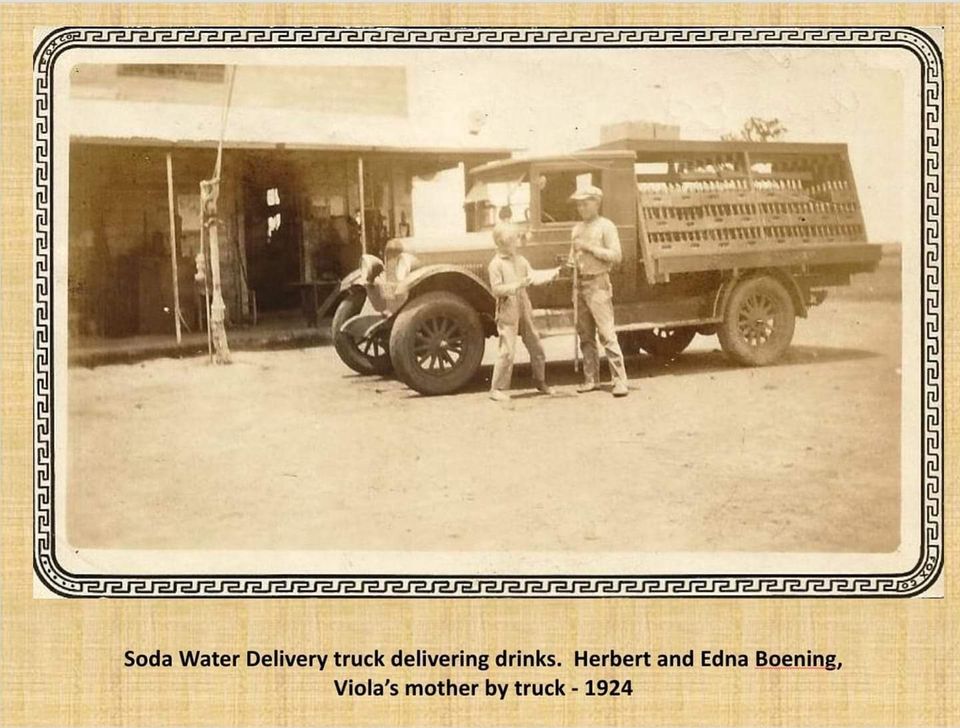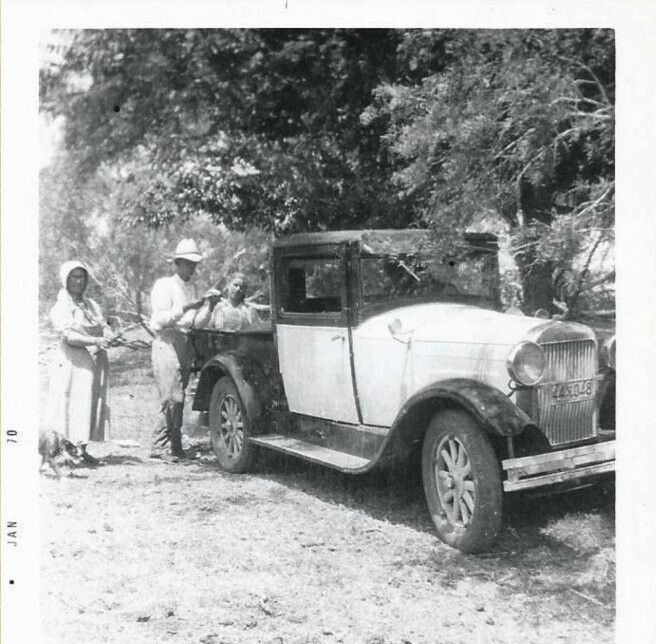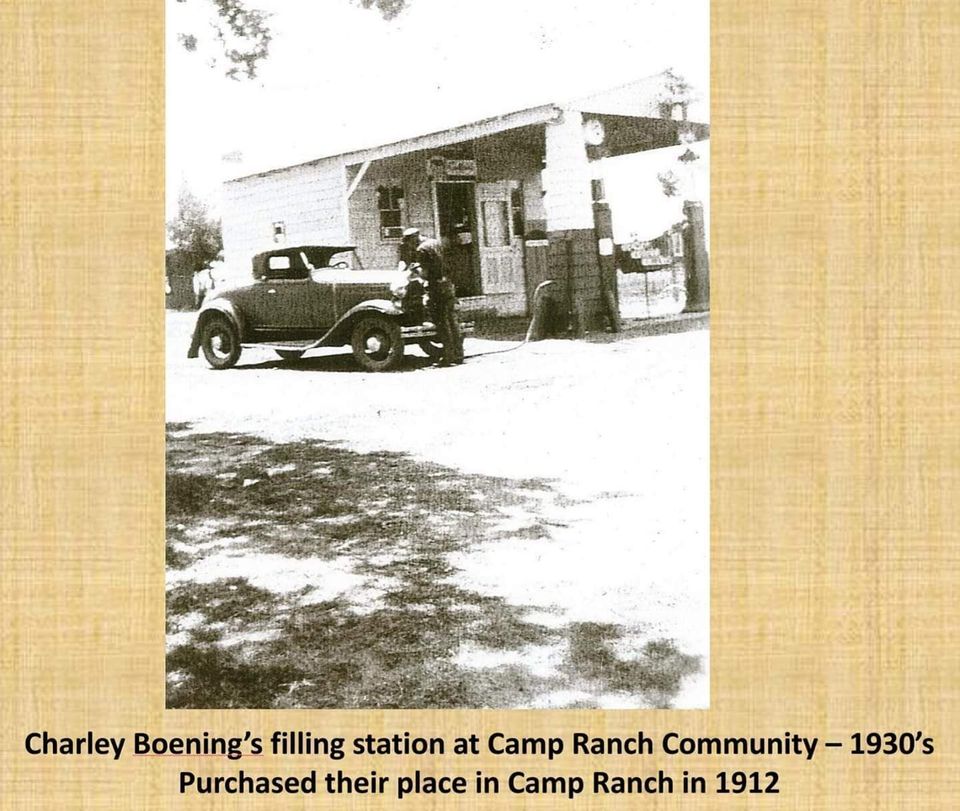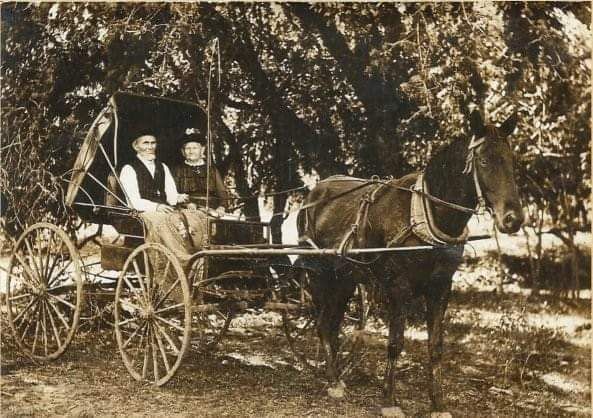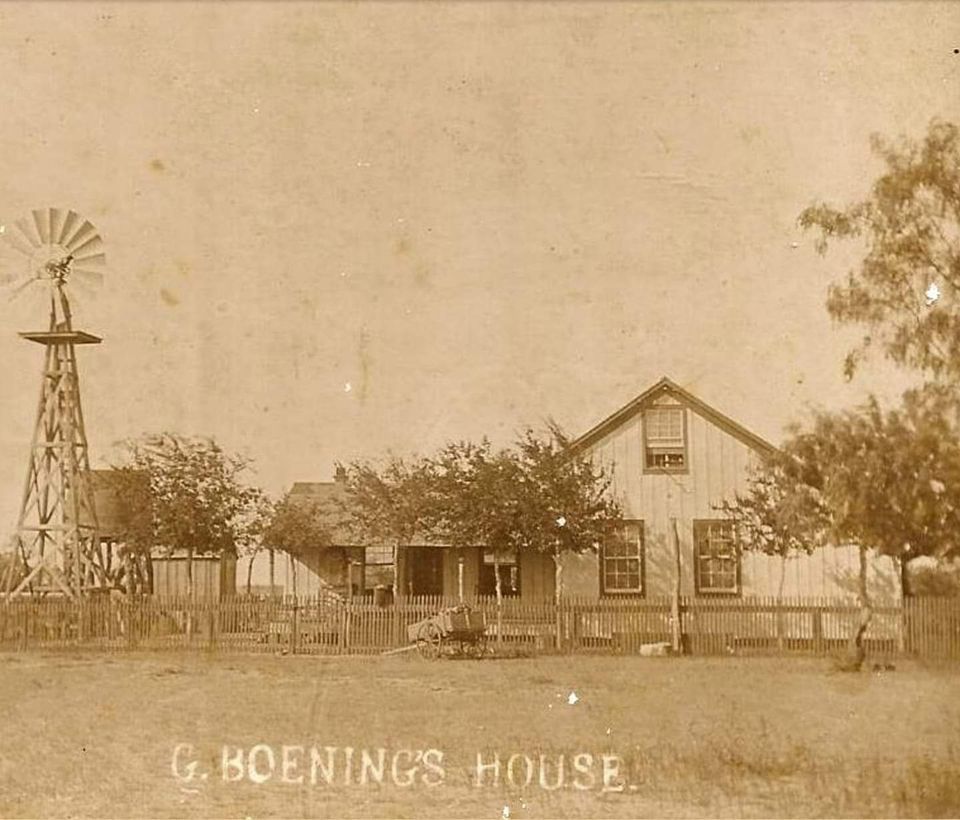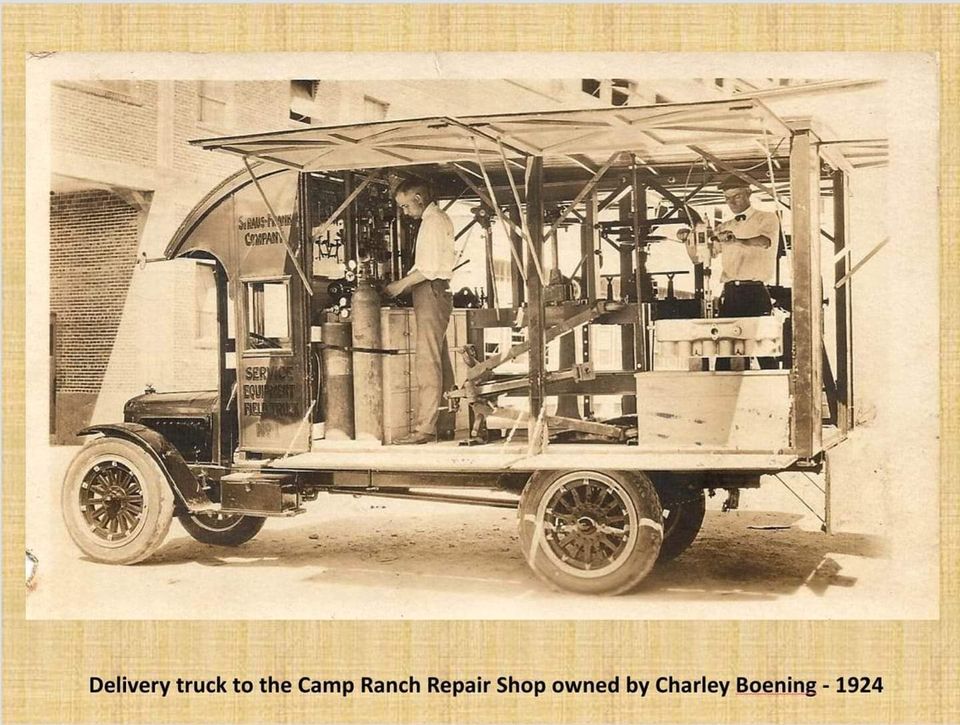November 30, 2016
Special to the Wilson County News
By Mark Cameron
Some younger readers may be unfamiliar with it, but many longtime Wilson County residents fondly remember Camp Ranch, a German settlement community located near Floresville, west of the San Antonio River.
It centers on the present intersection of F.M. 1344 and C.R. 132. Camp Ranch encompassed about 10,000 acres, with boundaries from the Ferry Crossing on the San Antonio River, west to the present F.M. 2505, north to C.R. 101, and south to C.R. 134, which was the edge of the Dewees brothers' ranch.
This area, prime ranching land, also served as a gathering point of small cattle herds to create larger herds up to 2,500 head to trail up north. From the Civil War until the railroad's arrival in Floresville in 1886 and barbed-wire fencing, Camp Ranch was very active in creating large cattle herds for trailing to northern markets.
In 1731, the meadowland that would become Camp Ranch along the San Antonio River was owned by Mission Espada. After 1794, the lands here were owned by a Canary Islands descendant, Ignacio Calvillo. The ranch was inherited by Calvillo's daughter, Doña Maria del Carmen, who set up headquarters and established a chapel for the care of the souls of her herdsmen, known as Mission Las Cabras (The Goat Ranch, or Rancho de las Cabras).
John F. Camp started developing his ranch in 1874 when he purchased 4,428 acres from Joseph Dwyer. Later in 1875, he purchased another additional 1,181 acres from Mr. Dwyer.
By 1904, John Camp's ranch had grown large enough that he began selling land to developers, who in turn sold to the German settlers coming from DeWitt, Lavaca, Columbus, Guadalupe, and Gonzales counties.
By 1904, Camp Ranch — having increased in size to 7,839 acres through the years — was sold to S.V. Houston, H.S. Tom, and William Green. The new owners were land developers, who divided the ranch into smaller tracts to sell to individuals for farming or smaller ranching operations.
Twenty families, mostly of German descent, came to settle in this area. The new landowners built a dance platform, started the Evergreen Shooting Club, built a one-room schoolhouse, cleared land for a baseball field, and started the Evergreen Cemetery. They also helped each other build homes.
Camp Ranch included the Albert, Boening, Coldewey, Haverlah, Key, Klein, Pfeil, Pundt, Striebeck, and Zook families, along with others. Many of these families still own the ranch and farm land.
Activity in Camp Ranch was centered around the intersection of F.M. 1344 and C.R. 132 (Old Campbellton Road). The Evergreen Cemetery, officially recorded as the Green School Cemetery, is located here.
Green School, a one-room school named for William Green, who donated the land for it, was a couple hundred yards north of the cemetery. It was torn down in 1929 to make way for a larger, two-room school. Playground equipment was added. It was called Camp Ranch School, named after original landowner John Camp. The school was for students through the eighth grade. If students went to high school, they went to Floresville High School.
Cora Lyons was the first teacher at the Green School. Later teachers included three of Henry Albert's daughters — Evelyn Boening, Helen Fisbeck, and Alyce Maeckel — and others, including Martha Bartek, Laura Atkins, Agnes Steinberg, Hattie Fuller, Myrtle O'Neill, Robert Schlortt, Allen Herring, Elsie Morgenroth, and Hattie Barnes.
Dances and other activities were held at the school. Family get-togethers of Camp Ranch would be at the school on the third Friday of each month. Community beef club members met at the school once a month to distribute the butchered calf meat, since there was no refrigeration. The school was the principal location for many different community uses.
On C.R. 132 in 1913, Charley Boening opened a filling station and a garage, general repair shop, and grocery store, called Camp Ranch Inn.
A dance hall was built in 1911 at the site of the dance platform.
The soil was mainly a rich mellow sandy loam, good for their gardens and farm crops. Many of the Camp Ranch residents attended the German Lutheran Church in Waldheim before the Lutheran churches in Floresville and Poth were built.
Today, there is little evidence of what was once the thriving Camp Ranch community. The school was torn down in the 1950s and children then attended the Floresville Independent School District. After S.H. 97 West out of Floresville was completed in the 1940s, land was purchased by and for Charley Boening's businesses to be moved near the new paved highway.
The dances stopped at the Camp Ranch Dance Hall after a young man was stabbed to death there. The dance hall was later torn down. The baseball field is now grown over with brush and the shooting club was dissolved.
Once significant as a staging area for cattle drives, and then a bustling community, Camp Ranch is now a memory.
The only evidence of Camp Ranch's existence is the Evergreen Cemetery, which is still in use to this day.
*************************
Marker Text This area located west of Floresville was one of the largest ranches in the cattle-driving era. During the 1700s and 1800s, the area, being prime cattle ranch land, dominated the pre-Wilson County economy and served as a gathering point of small herds creating larger herds to trail up north. In 1731, the meadowland west of the San Antonio River was owned by Mission Espada with the ranch headquarters being the compound of Rancho de Las Cabras. In 1874, John F. Camp purchased and began developing the prairie ranch land. By 1904, Camp's ranch, having increased size to approximately 10,000 acres, was sold to S.V. Houston, H.S. Tom and William Green. The new owners were land developers and began dividing the ranch into smaller acreage tracts to settlers from surrounding counties. Then the small, prosperous Camp Ranch community, named after John F. Camp, began to develop as twenty families moved to the area. To encourage additional development, the new landowners built a one-room school house known as Green School. Later, a larger school was built named Camp Ranch School. Other additions were the Evergreen Cemetery, dance platform, Evergreen Shooting Club and baseball field. Around 1912, resident Charley Boening added a filling station, garage, general repair shop and grocery store. Although many of these tangible reminders of the town have been lost to time, the Evergreen Cemetery remains as a connection to the Camp Ranch community heritage. (2017)
